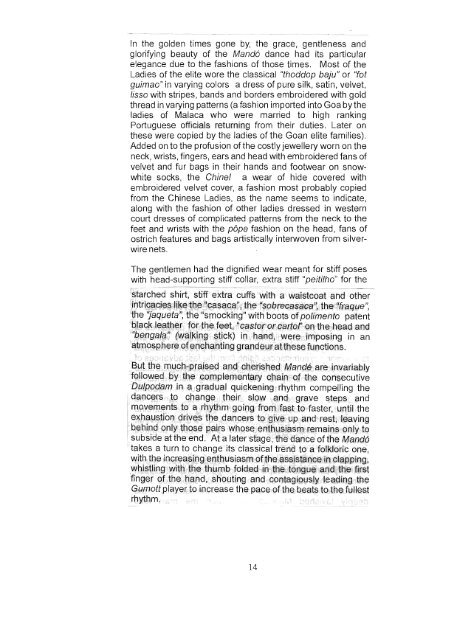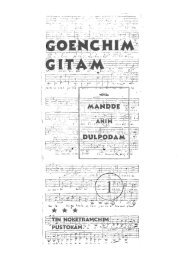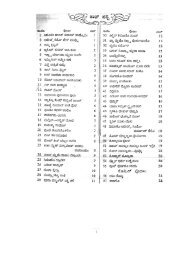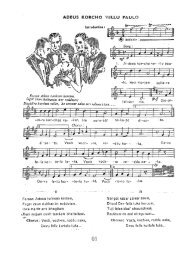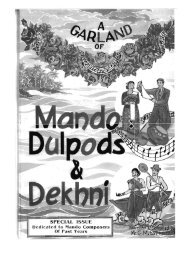Booklet - Songs from Goa
Booklet - Songs from Goa
Booklet - Songs from Goa
Create successful ePaper yourself
Turn your PDF publications into a flip-book with our unique Google optimized e-Paper software.
In the golden times gone by, the grace, gentleness and<br />
glorifying beauty of the Mand6 dance had its particular<br />
elegance due to the fashions of those times. Most of the<br />
Ladies of the elite wore the classical "thoddop baju" or "fot<br />
guimao" in varying colors a dress of pure silk, satin, velvet,<br />
lisso with stripes, bands and borders embroidered with gold<br />
thread in varying patterns (afashion imported into <strong>Goa</strong> by the<br />
ladies of Malaca who were married to high ranking<br />
Portuguese officials returning <strong>from</strong> their duties. Later on<br />
these were copied by the ladies of the <strong>Goa</strong>n elite families) .<br />
Added on to the profusion of the costly jewellery worn on the<br />
neck, wrists, fingers, ears and head with embroidered fans of<br />
velvet and fur bags in their hands and footwear on snowwhite<br />
socks, the Chinel a wear of hide covered with<br />
embroidered velvet cover, a fashion most probably copied<br />
<strong>from</strong> the Chinese Ladies, as the name seems to indicate,<br />
along with the fashion of other ladies dressed in western<br />
court dresses of complicated patterns <strong>from</strong> the neck to the<br />
feet and wrists with the pope fashion on the head, fans of<br />
ostrich features and bags artistically interwoven <strong>from</strong> silverwire<br />
nets.<br />
The gentlemen had the dignified wear meant for stiff poses<br />
with head-supporting stiff collar, extra stiff "peitilho" for the<br />
-- =<br />
starched shirt, stiff extra cuffs with a waistcoat and other<br />
intricacies like the "casaca", the "sobrecasaca", the "fraque",<br />
the 'jaqueta", the "smocking" with boots of polimento patent<br />
black leather for the feet, "castor or cartof' on the head and<br />
"bengala" (walking stick) in hand, were imposing in an<br />
atmosphere ofenchanting grandeur at these functions.<br />
But the much-praised and cherished Mandt!; qre invariably<br />
followed by the complementary chain of the consecutive<br />
Dulpodam in a gradual quickening rhythm compelling the<br />
dancers to change their slow and grave steps . and<br />
Imovements to a rhythm going <strong>from</strong> fast to faster, until the<br />
exhaustion drives the dancers to give up and rest, leaving<br />
behind only those pairs whose enthusiasm remains only to<br />
subside at the end. At a later stage, the dance of the Mand6<br />
takes a turn to change its classical trend to a folkloric one,<br />
with the increasing enthusiasm ofthe assistance in clapping,<br />
whistling with the thumb folded in the tongue and the first<br />
finger of the hand. shouting and contagiously leading the<br />
Gumott player to increase the pace of the beats to the fullest<br />
rhythm.<br />
14


